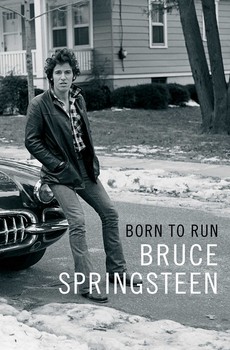When I read Bruce Springsteen’s autobiography Born to Run in January, I learned that he and I have a few things in common.
- Both of us like the smell of coffee but not the taste.
- Neither of us can read sheet music.
- Both of us grew up in New Jersey (okay I knew that), in a family with two girls and one boy.
- Both of us learned our craft on the job.
While I have long enjoyed his music, learning these details about Bruce Springsteen’s life made me feel more connected to him and to his music. They are experiences that I can relate to and empathize with. They make his larger-than-life persona more accessible to me.
Other details enhanced my connection to his music as well. Learning that the song “The River” was written about his sister Virginia gives it gravitas.
When Virginia first heard “The River” she hugged Bruce and said “That’s my life.” He called her reaction “the best review I’ve ever gotten.”
As famous as he is now, it still matters that the people close to him understand his art and recognize the stories he tells. I love that.
Both the book and his songs prove Bruce Springsteen as a master storyteller.
Learn Brand Storytelling from The Boss
Here are 10 lessons from his book that you can use to tell your brand’s story.
- Tell your story to a member of your key audience. Speak to one person, rather than formally addressing a large group. Bruce’s autobiography reads as if he is talking to you over lunch at a diner. A very long lunch.
- Respect your listener’s level of knowledge. Bruce knew that the primary reader for his autobiography would be a long-time fan. When he talked about how Ronald Reagan tried to associate “Born in the U.S.A.” with his 1984 presidential campaign during New Jersey campaign stops, instead of describing the outcome he finished with ”And you know the rest.” He knew that his reader would get his reference and enjoy being in the know.
- Avoid a chronological recounting of facts. Straight chronologies are yawn fests and generate no emotional connection. While Born to Run is arranged chronologically, most of Bruce’s storytelling focuses on insights on his life, his family and his friends.
- Include characters. Bruce Springsteen may be the lead and the brand, but he could not tell his story without featuring family, friends and business relationships. Characters tell the story through their actions. Your brand’s characters help make the story yours. Emotional connections occur when readers relate to them.
- Be authentic. Your story needs to be true, but not necessarily perfect. Bruce shared his dysfunctional family childhood, his struggles with relationships, and his lifelong battle with depression because these struggles served his story theme. His trials and mistakes humanized him and made him relatable.
- Have a theme. Bruce’s theme was to show the reader how he came to be a musician and band leader. It’s a thread that he weaves through the entire book. The origin of a brand is a good theme for brand stories as well, but not the only one.
- Include your audience’s role. Bruce talks about how his audience’s reactions factored into his evolution as a musician and how the interaction among band members influenced the band’s composition. Good brand stories feature their customers and other constituents as well.
- Research and double check your facts. Credibility builds trust, and inaccuracies in your story can undermine your brand. Once Bruce had hit the big time, he went back to New Jersey to interview people in the places he wanted to write about in his songs to ensure that he was keeping it real.
- Edit for relevance and discretion. This may be surprising given the 508-page length of his autobiography, but at the end Bruce says “I haven’t told you ‘all’ about myself. Discretion and the feelings of others don’t allow it. But in a project like this, a writer has made one promise: to show the reader his mind. In these pages I’ve tried to do that.”
- Convey why you do what you do. What Bruce says about a writer’s promise above is true for your brand’s story too. Show the reader your brand’s purpose.
Bruce Springsteen’s autobiography is one long story comprised of many smaller ones. It was told from a particular point of view. It could have been shaped from many different angles.
The same is true for telling stories about your brand. There isn’t one definitive story, and the overall arc of your brand’s story is served by many smaller ones that support it.
What is most important is to use stories to make your brand memorable, to differentiate it and to connect emotionally to your audience. Just like Bruce does.
If you liked this post, you’ll love the next one.
To have future posts sent to your inbox...


Love this. You always have such a unique and fresh perspective to share. I always love seeing what correlations you come up with with what I would have initial thought were two completely unrelated things, but when you put them together it’s like “Ah HA!) Of course I see the connection. Brilliant
So glad you enjoyed the post Kris! Thanks so much for letting me know and for your kind words.